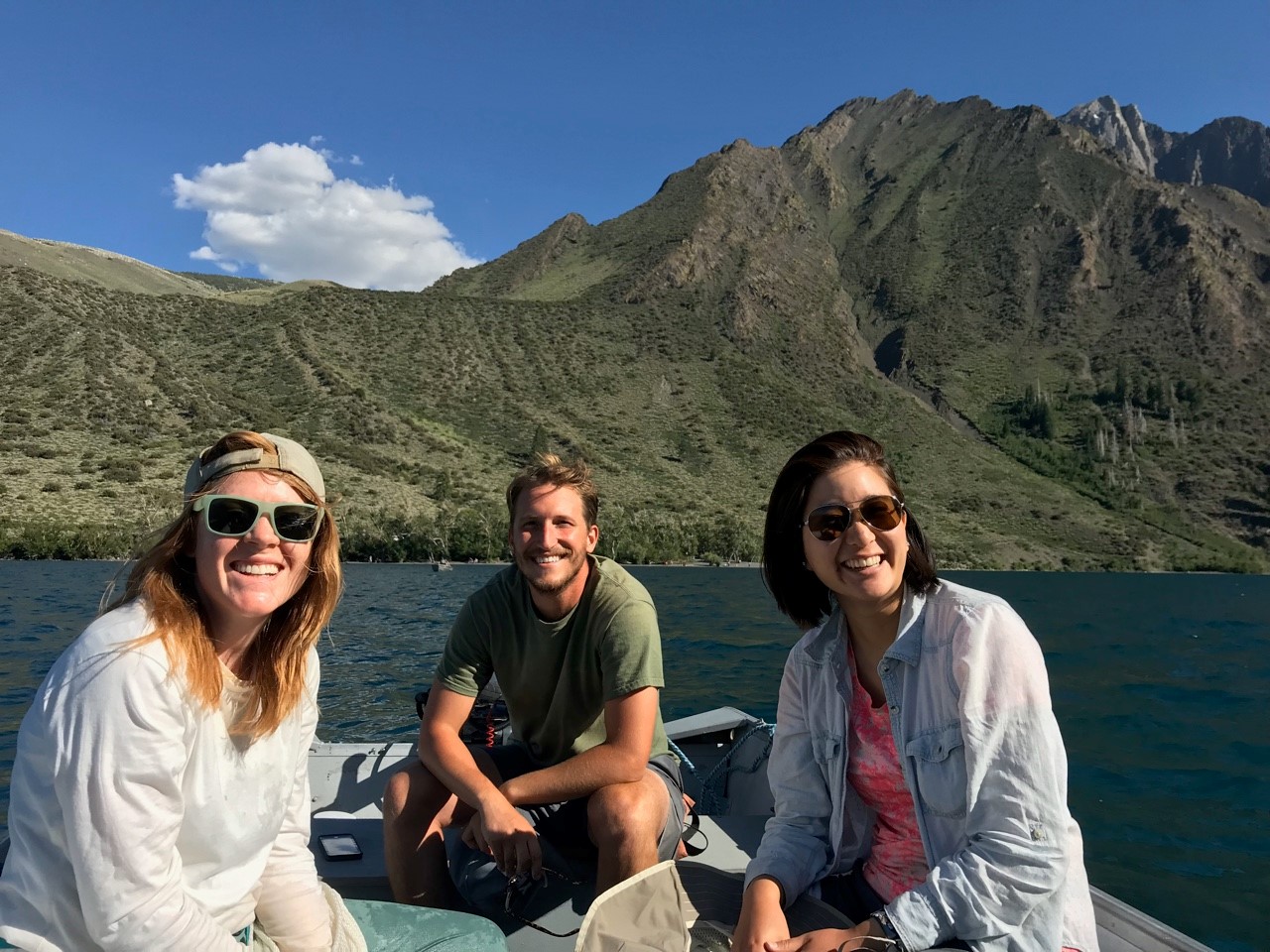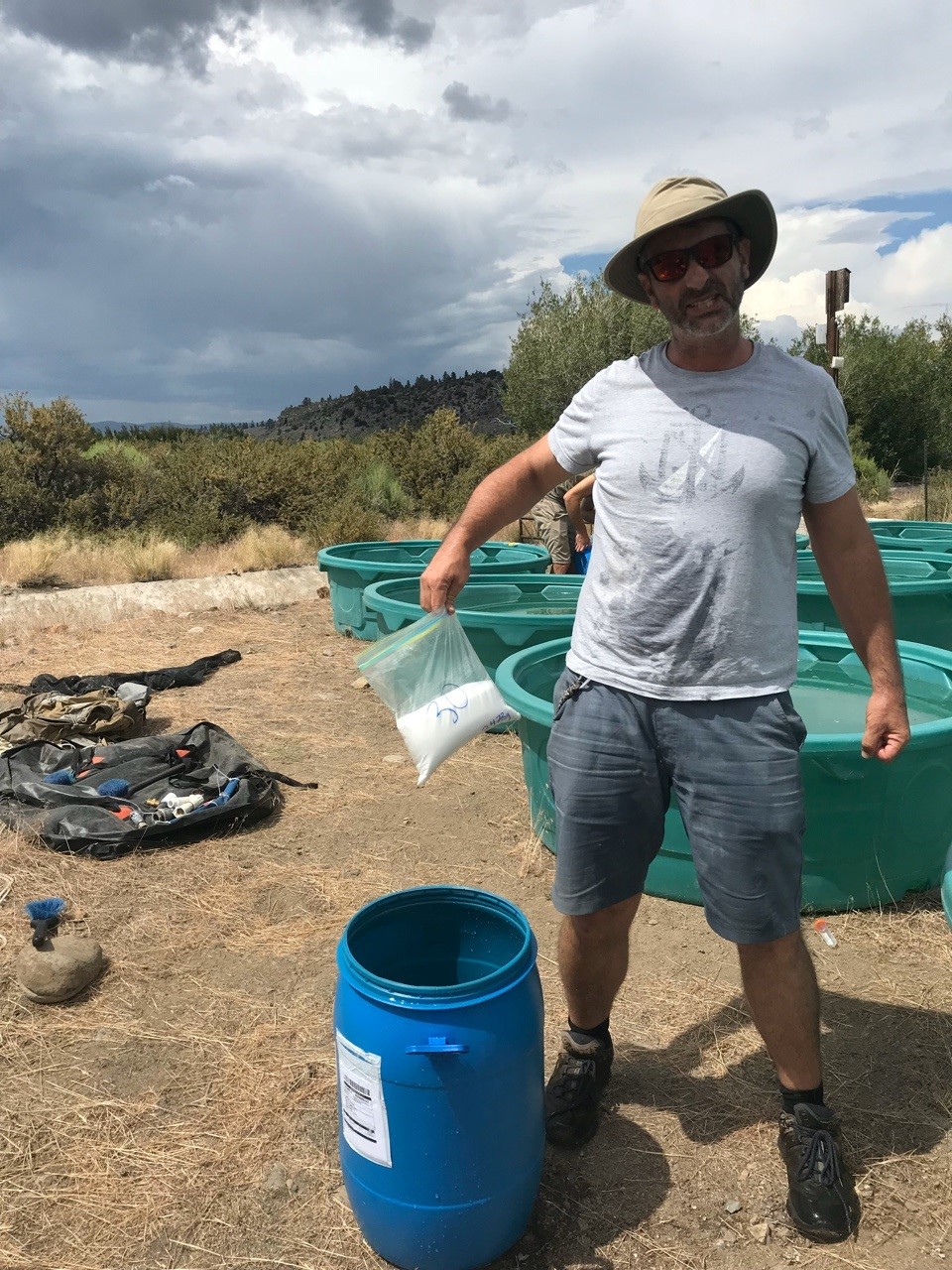Government Guidelines Across North America, Europe Fail to Protect Lakes from Salt Pollution
UC San Diego ecologists contribute to a coordinated international scientific experiment
Published Date
By:
- Christine Billau
- Mario Aguilera
Share This:
Article Content
The salinity of freshwater ecosystems caused by road de-icing salts, agriculture fertilizers, mining operations and climate change is increasing worldwide and current water quality guidelines don’t do enough to address the issue, an international study co-authored by University of California San Diego scientists and led by The University of Toledo and Queen’s University in Kingston has found.
The research, conducted in collaboration with dozens of scientists across North America and Europe, shows significant damage is being done to freshwater lakes by salt concentrations that are below ranges government regulators have deemed safe and protective of freshwater organisms.
Using an experimental network of 16 sites in four countries, the research published in the Proceedings of the National Academy of Sciences indicates freshwater salinization triggers a massive loss of zooplankton and an increase in algae—even at the lowest chloride thresholds established in Canada and the U.S. and throughout Europe.

UC San Diego researchers established 30 400-gallon experimental ponds as part of the new study. They added increasingly levels of salt to each and studied the salt concentrations’ effect on freshwater organisms, including algae and crustaceans. Shurin Lab, UC San Diego
Zooplankton are a critical food resource for many young fish, and changes caused by rising salinity could alter nutrient cycling, water quality and clarity, and instigate growth and population declines in economically important fish species.
Researchers say the results indicate a major threat to the biodiversity and functioning of freshwater ecosystems and the urgency for governments to reassess current threshold concentrations to protect lakes from salinization sparked by sodium chloride, one of the most common salt types leading to the salinization of freshwater lakes.
UC San Diego Biological Sciences Professor Jonathan Shurin, former graduate student Celia Symons (now a professor at UC Irvine) and current graduate student Hank Baker conducted one of the sites of the new study. At the Sierra Nevada Aquatic Research Laboratory near Mammoth Lakes they established 30 400-gallon experimental ponds. They added increasingly levels of salt to each and studied the salt concentrations’ effect on freshwater organisms, including algae and crustaceans.
Because the same experiment was conducted at 15 other sites, Shurin says the researchers were able to pinpoint specific effects of salt concentrations.
“Salt concentrations are rising in lakes and rivers across North America and Europe over recent decades due to road deicing,” said Shurin, chair of the Section of Ecology, Behavior and Evolution. “The results of this study show that the levels of saltiness that impair ecosystems are lower than previously thought, with fish, algae and other organisms likely being impacted at levels commonly seen in the field. The transportation agencies that decide how much and when to apply salt to roads to melt ice follow these guidelines. The study suggests that the levels considered safe need to be revised downward.”

UC San Diego researchers working on the salt project at the Sierra Nevada Aquatic Research Laboratory included (left to right) former postdoctoral scholar Natalie Jones, current graduate student Hank Baker and former bachelor’s/master’s student Stephanie Li. Shurin Lab, UC San Diego
“Salt pollution occurring from human activities such as the use of road de-icing salts is increasing the salinity of freshwater ecosystems to the point that the guidelines designed to protect fresh waters aren’t doing their job,” said Bill Hintz, assistant professor of ecology at The University of Toledo, author of the paper and co-leader of the project. “Our study shows the ecological costs of salinization and illustrates the immediate need to reassess and reduce existing chloride thresholds and to set sound guidelines in countries where they do not exist to protect lakes from salt pollution.”
The lowest threshold for chloride concentration in the U.S. established by the Environmental Protection Agency is 230 milligrams of chloride per liter. In Canada, it’s 120 milligrams of chloride per liter. Throughout Europe, thresholds are generally higher.
It can take less than a teaspoon to pollute five gallons of water to the point that is harmful for many aquatic organisms.
In other countries such as Germany, chloride concentrations of between 50 and 200 milligrams per liter are classified as “slightly polluted by salts,” and concentrations between 200 and 400 milligrams per liter are classified as “moderately polluted by salts.” The drinking water guideline is 250 milligrams per liter across much of Europe.
But as the study shows, negative impacts occur well below those limits. At nearly three quarters of the study sites, chloride concentration thresholds that caused a more than 50% reduction in zooplankton were at or below the governments’ established chloride thresholds.
The loss of zooplankton triggered a cascading effect causing an increase in phytoplankton biomass, or microscopic freshwater algae, at almost half of the study sites.
“More algae in the water could lead to a reduction in water clarity, which could affect organisms living on the bottom of lakes as well,” said Shelley Arnott, professor of aquatic ecology at Queen’s University and co-leader of the project and paper. “The loss of zooplankton leading to more algae has the potential to alter lake ecosystems in ways that might change the services lakes provide, namely recreational opportunities, drinking water quality and fisheries.”
The scientists chose to study zooplankton communities from natural habitats instead of short-duration, single-species laboratory studies because such an approach encompasses a greater diversity of species and naturally occurring predator-prey and competitive interactions over a six-to-seven-week timespan within the zooplankton community.

UC San Diego Biological Sciences Professor Jonathan Shurin with salt used to test freshwater organisms at the Sierra Nevada Aquatic Research Laboratory near Mammoth Lakes. Shurin Lab, UC San Diego
“This kind of experiment, in which scientists around the world coordinate using the same design and methods, are extremely powerful for establishing generality in understanding the forces that shape ecosystems,” said Shurin. “A single experiment in one place can be interesting and informative, but the same experiment done in many places is illuminating. It also shows variation among locations that are not due to methodologies since we all agreed to use the same approach. Our study is an example of the new ‘big ecology’ in which the international community of ecologists comes together to tackle pressing issues in how we manage our natural resources as a society.”
The study was designed to better understand how the chloride thresholds would hold up in a more natural ecological setting.
They focused on determining if current chloride-based water-quality guidelines protect lake organisms in regions with different geology, water chemistry, land-use and species pools.
“Many salt-contaminated lakes with chloride concentrations near or above thresholds established throughout North America and Europe might have already experienced food web shifts,” Hintz said. “This applies to lakes across the globe, not only among the study sites.
“And the variability in our experimental results demonstrate how new thresholds should integrate the susceptibility of ecological communities at the local and regional scale. While the government guidelines may protect freshwater organisms in some regions, that’s not the case for many regions in the U.S., Canada and Europe.”
Solutions also include finding ways to strike a careful balance between human use of salt responsible for freshwater salinization with ecological impacts, such as reducing the amount of road salt used to melt winter snow and ice to keep people safe and traffic moving. A previous study led by Hintz suggests best management practices.
Scientists across the globe contributed to the new project, from the University of California Irvine, University of Barcelona, Ohio Wesleyan University, Wilfrid Laurier University, Ryerson University, Rensselaer Polytechnic Institute, the Ontario Ministry of Environment, Purdue University, University of California San Diego, Dartmouth College, University of Évora, University of Vic – Central University of Catalonia, University of Helsinki, Ontario Tech University, McGill University, Linnaeus University, Uppsala University, Swedish University of Agricultural Sciences, Karlstads University, Montclair State University, Wayne State University, Carl-von-Ossietzky University Oldenburg, Lund University and Université du Québec à Montréal.
Additional papers led by other authors from the 16-site study as part of the Global Salt Initiative led by Arnott and Hintz include:
- Marie-Pier Hébert et al. 2022 in the journal Limnology and Oceanography Letters, titled “Lake salinization drives consistent losses of zooplankton abundance and diversity across coordinated mesocosm experiments.”
-- Original news release provided by the University of Toledo
Share This:
You May Also Like
Stay in the Know
Keep up with all the latest from UC San Diego. Subscribe to the newsletter today.



